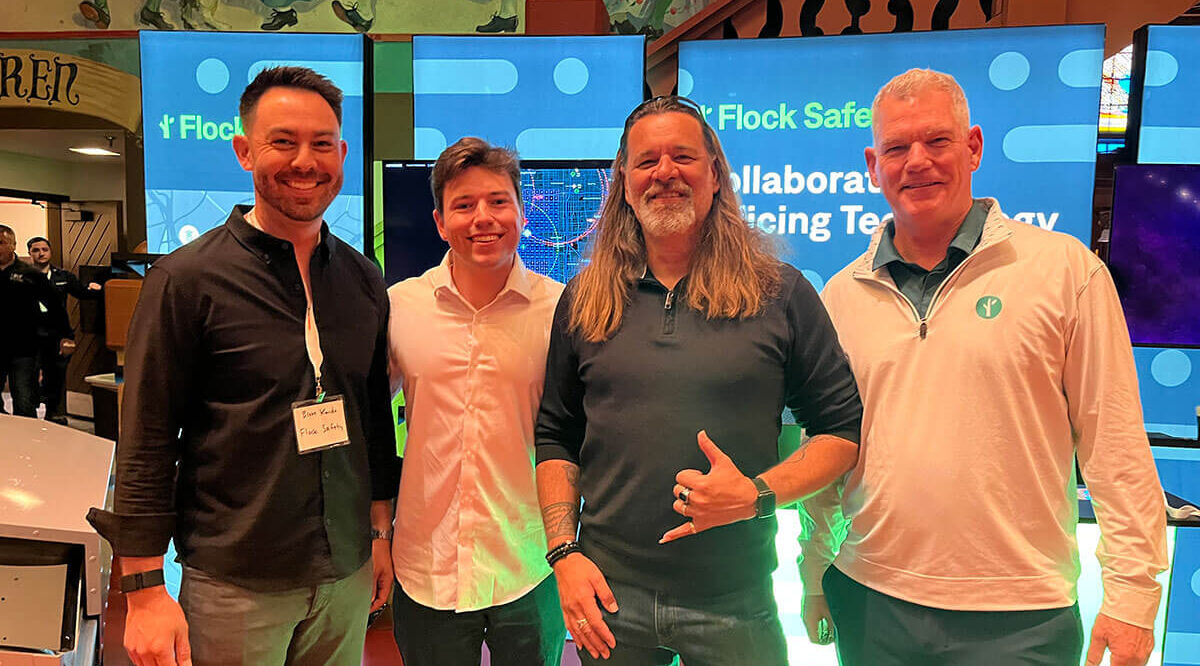The DRONERESPONDERS National Public Safety UAS Conference (NACON) once again brought together some of the most innovative minds in public safety technology. This year’s event’s show floor highlighted some of the most cutting-edge advancements in drone technology, AI integration and collaborative policing platforms. Here’s an update from leading companies as to what’s new in their public safety portfolios, why it matters…and where they plan to go in this critical space.
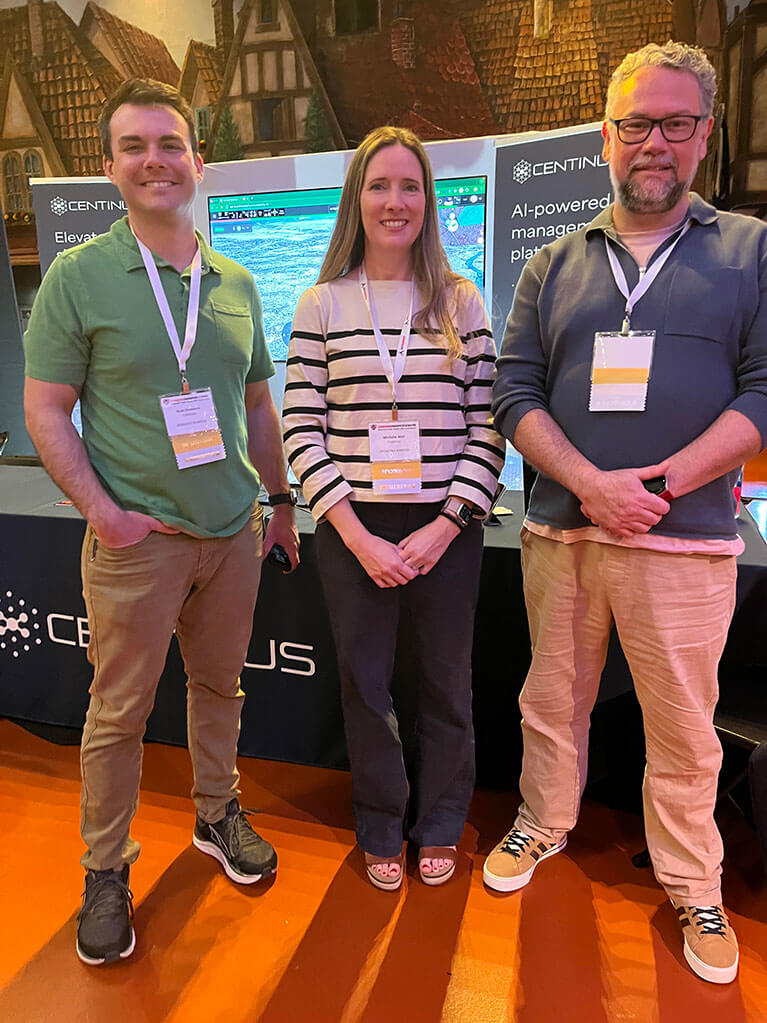
Centinus: AI For Remote Flight and Object Detection
Jonathan Duff, CEO of Centinus, highlighted his company’s mission to enhance public safety through an advanced remote flying platform for police departments and other safety organizations This cloud-based system allows users to control drones “from anywhere” and provide real-time situational awareness through its live streaming capabilities. The company specifically showcased its artificial intelligence (AI) object detection features, which automate complex tasks and improve decision-making for responders.
What’s New: Centinus unveiled the final beta stage of its AI-powered object detection. It enables drones to identify and track specific objects, such as vehicles, in real-time. This technology is ideal for tasks like surveillance and search and rescue (SAR) operations.
Duff explained, “AI is a phrase that is massively overused…and massively misunderstood.” He continued, “In our instance, what we’re saying is we want to make jobs that normally take an enormous amount of time and energy for the pilot and get them to an AI system, which then ultimately provides that pilot with the information they need.”
For example, the company’s upcoming “BOLO system” will allow a pilot to ask the AI assistant to be on the lookout for something. “Let’s say it’s a black Camry with a partial license plate,” Duff said. “Every time the drone flies… the system underneath is constantly on the lookout for that particular vehicle. If it finds those parameters, it will send the pilot an alert.”
Why It Matters: By leveraging AI, Centinus aims to make drone operations more efficient and safe, while reducing the workload on pilots and enhancing situational awareness.
What’s Next: The company plans to turn its focus to predictive capabilities, including behavioral intent detection, to anticipate and prevent potential threats. This involves integrating broader AI capabilities to analyze complex scenarios and provide actionable insights.
“A responder can have it (the platform) look at a situation that it sees regularly, like a yard in a prison environment with a group of people who stand together. There’s usually five of them. Today there’s only four. Where’s the fifth guy?” Duff explained. “Once the system hits on that, it will provide you with an alert with a different threat level, depending on what the expectation of the situation is. This will allow the responder to step in and defuse a potential situation before it actually occurs.”

Flock Safety: End-to-End Solutions for Crime Reduction in Communities
Brett Kanda, Senior Solutions Specialist at Flock Safety, discussed his company’s comprehensive approach to eliminate crime through its suite of advanced technologies. Flock Safety integrates license plate readers, gunshot detection, drone technology and more to create a holistic robust policing platform. The company recently acquired AeroDome to expand its drone ecosystem.
What’s New: Flock Safety has enhanced its drone-as-a-first-responder (DFR) technology, to allow for even more rapid deployments of drones to investigate incidents. This includes innovative drone docking stations with battery-swapping technology, which integrates with Flock’s other systems.
Kanda explained, “We have some unique differentiators for DFR…We have the biggest network of license plate readers, both public and private, in the entire country. So when you get a stolen vehicle hit, now you are able to fly a drone with one click of a button to that last known location. This is going to help you make more arrests safely.”
Why It Matters: By combining public and private sector data, Flock Safety enables more efficient crime solving and enhances safety for both law enforcement and communities.
Kanda emphasized, “Every single piece of technology that we build is designed to help eliminate crime. And what’s really unique about Flock Safety – we provide a collaborative policing platform. Not only will the police department or sheriff’s office in that city have our technology, but so will HOA (home owner’s association) and private businesses.” This collaborative approach allows for more effective crime prevention and resolution.
What’s Next: According to Kanda, the company plans to continue leveraging AI and machine learning to make its products more efficient and user-friendly for customers.
“We’re doing a lot in AI across all of our platforms, a lot of machine learning,” Kanda emphasized. “I would say that’s the core of what we’re focused on – making our legacy products better consistently.” He continued, “AI is going to allow our customers to do more with less and be hyperefficient, which is what they really need in this day and age.”

Flying Lion: Training the Future of Drone Responders
Barry Brennan, president and founder of Flying Lion, emphasized his company’s role in the evolution of training for drone responders, with an emphasis on real-world scenarios. Brennan highlighted the importance of practical training environments for officers to hone their skills safely.
What’s New: The company announced its new “FLI Town,” a live training environment in a remote desert location in California. This setup allows officers to practice responding to various scenarios and enhance their skills in a super low-risk, highly controlled environment.
Brennan noted, “It’s live. It’s a real world environment. We have targets put up through this abandoned city that used to house 4000 people. It’s got about 450 structures and 25 roads. So now we’re able to replicate how they’re going to respond in the real world, using targets on the ground or in buildings.” This approach helps develop consistent techniques that could potentially nationalize training standards for officers.
Why It Matters: By offering realistic training scenarios, Flying Lion helps officers realistically prepare for true emergencies. This improves response times and safety.
Brennan explained, “We can take what we’re already teaching officers – how to respond to calls for service over an urban area (which is a little dangerous and risky) – and now we can actually have these 20 scenarios that they’re able to fly and learn how to do their tactics and techniques in a perfect place with no ground risk and very limited air risk.”
What’s Next: The company plans to expand its training facilities and invite vendors to collaborate on integrating new technologies and techniques at the site. Brennan mentioned, “Now that we have an area, our ‘sandbox in the desert,’ we can bring in all kinds of vendors and all systems, whether it’s hardware or software.” He continued “We plan to work with the FAA to come up with ideas about how all this technology can work together.” This collaborative environment aims to accelerate the development of drone technology for public safety.
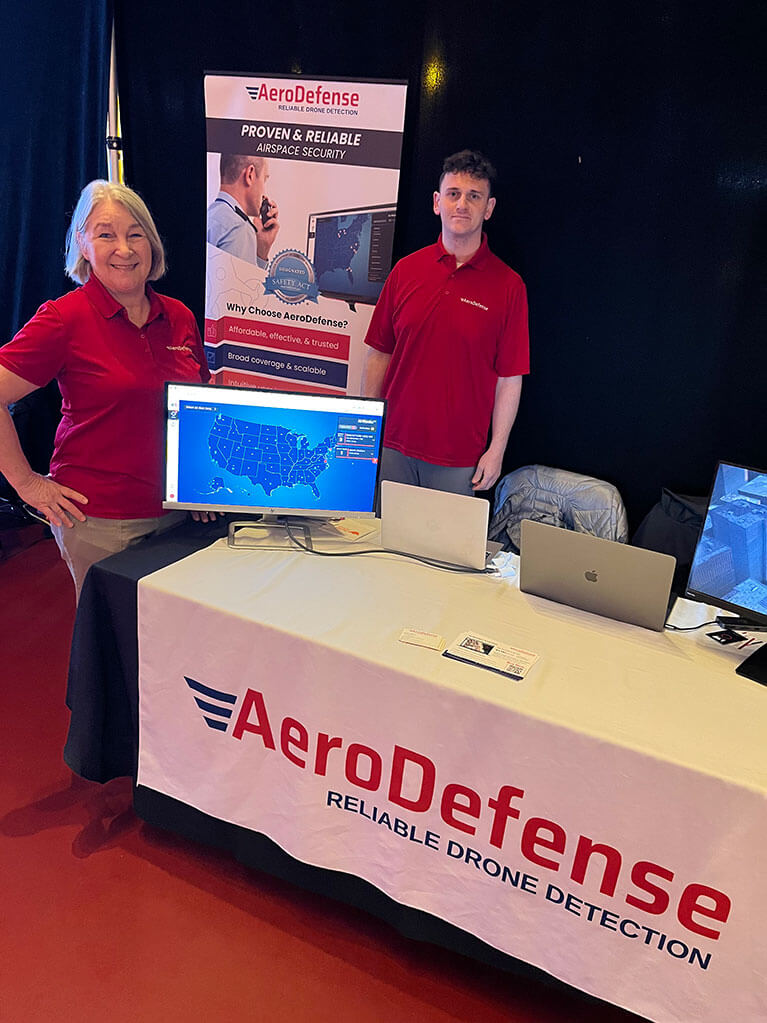
AeroDefense: Affordable Drone Detection
Linda Ziemba, founder of AeroDefense, highlighted her company’s expertise in drone detection technology and comprehensive drone detection solutions, including remote identification (Remote ID) receivers and spectrum sensing. Ziemba also emphasized the importance of affordable and effective drone detection for public safety.
What’s New: The company showcased its AirWarden™ Essentials, an affordable drone detection system priced under $5,000 per year. This makes advanced drone detection accessible to more law enforcement agencies.
Ziemba highlighted the need for such affordable and reliable solutions. She stated that the AirWarden system is designed to be practical for various environments, including high RF noise areas like stadiums. This is particularly important in dense urban environments where traditional detection systems may struggle. She also emphasized the importance of collaboration with vendors to match drone detection technology investments with specific threat levels.
Why It Matters: By monitoring airspace effectively, AeroDefense helps ensure public safety and security, especially in critical locations.
Ziemba noted, “The innovative AirWarden Remote ID Receiver not only receives Remote ID broadcasts but also detects WiFi drones that are publicly transmitting.” This capability is crucial to monitor airspace effectively, especially in sensitive locations like schools and stadiums.
What’s Next: The company plans to continue expanding its national airspace monitoring capabilities. AeroDefense remains committed to providing solutions that are both effective and compliant with regulations so users have confidence in deploying its systems.
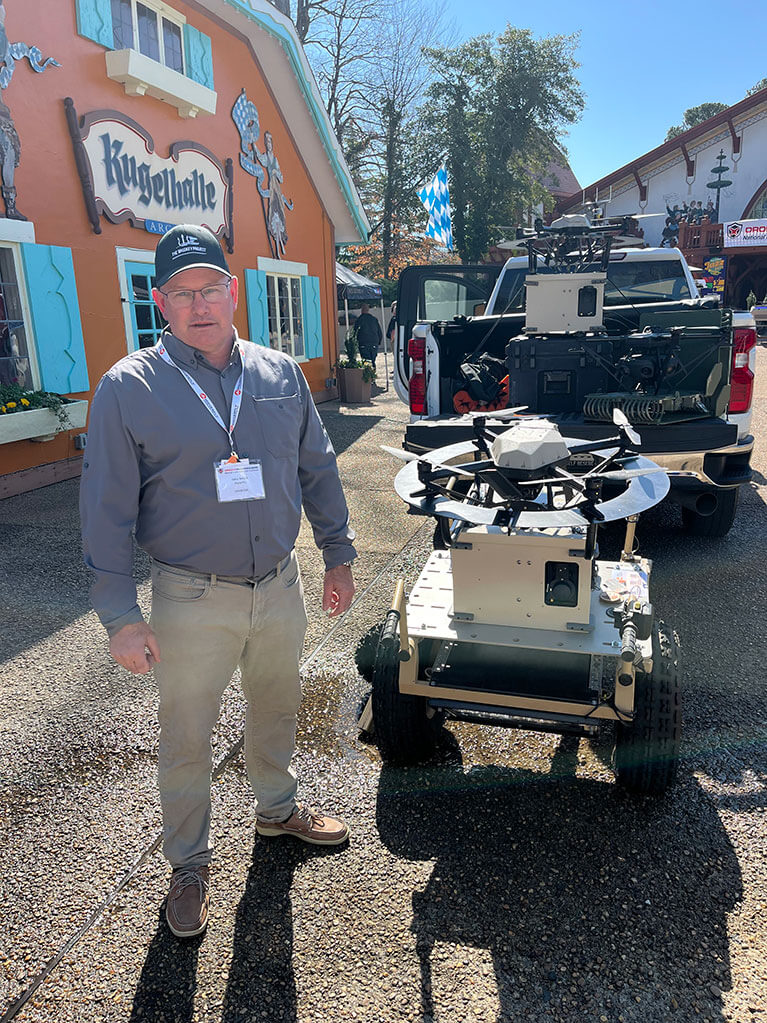
HoverFly: Tethered Drones for Enhanced Communication
John Amick, VP of Business Development at HoverFly, showcased his company’s tethered drone technologies: the Defense Innovation Unit (DIU) Blue-UAS certified Spectre and the smaller commercial and public-safety focused Sentry. HoverFly’s drones provide secure, long-duration aerial communication and surveillance capabilities. Amick highlighted the versatility and reliability of these systems, which are particularly useful for extending communication ranges and providing real-time data transmission over long distances.
What’s New: The company demonstrated the commercial version of its tethered drones, which can be deployed from vehicles, such as the Hendrick Motorsports – Silent Tactical Energy Enhanced Dismount (STEED). This configuration enhances communication networks in challenging environments and operations where reliable communication is essential.
Amick explained, “We’re still small and light enough to take that 200ft tower and/or periscope, whatever payload you have on it, and put it anywhere within a seven kilometer out and back perimeter with this complimentary Hendrick STEED.” He continued, “Here at the show, I’ve got one that can be towed behind the vehicle and then deployed manually taking that 200ft tower, and putting it on a ridge line and really building out a network, while also flying the drone off the pickup truck.”
Why It Matters: HoverFly’s technology extends communication ranges, supporting SAR and providing real-time long-range data transmission. This capability supports both public safety and commercial operations by ensuring consistent connectivity. Amick noted that these systems are particularly effective for beyond line-of-sight (BVLOS) operations, such as in disaster relief efforts.
What’s Next: Building on its recent Blue List certification, the company plans to expand its capabilities to water-based operations by integrating its drones with unmanned vessels. This will further enhance HoverFly’s ability to provide communication and surveillance solutions in diverse environments, using water-based systems.
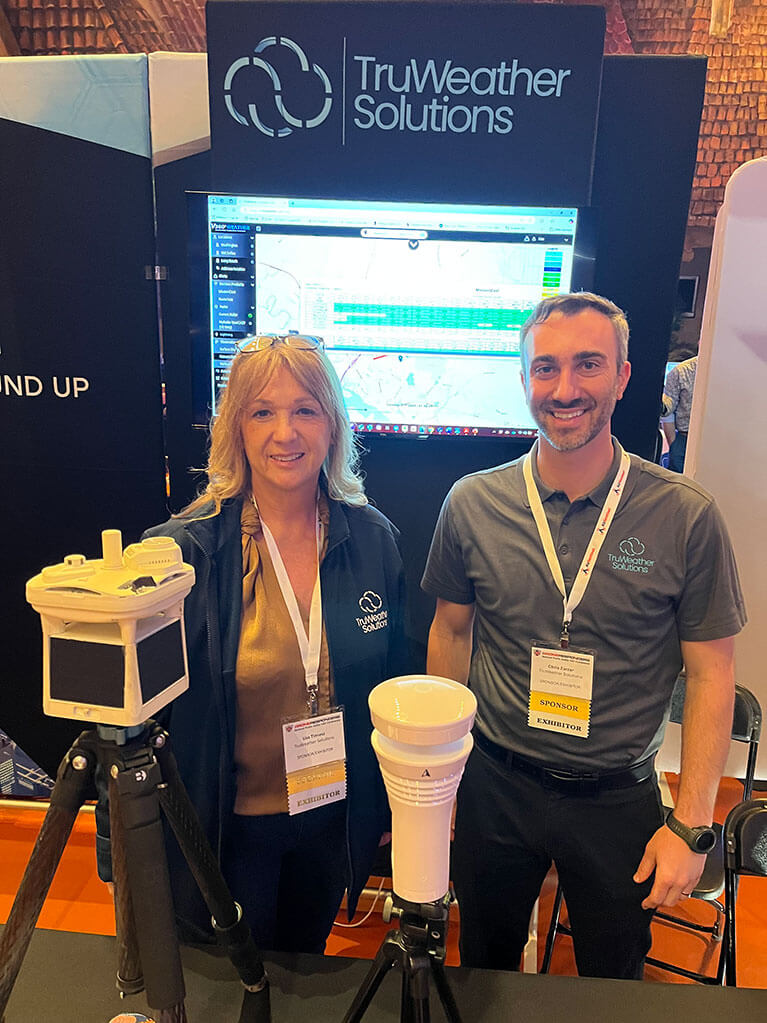
TruWeather: Enhancing Safety with Weather Insights
Dr. Chris Zarzar, Director of Strategy and Innovation at TruWeather Solutions, discussed his company’s focus on providing micro-weather data to bolster flight times and safety in low-altitude drone operations. Its V360™ platform helps ensure safe and efficient drone flights by utilizing additional data points to provide more accurate weather condition updates.
What’s New: TruWeather highlighted its upcoming lightning detection feature for V360. The company designed this functionality to enhance safety for drone operations by alerting operators to potential lightning hazards.
The lightning detection feature integrates with TruWeather Solutions’ broader weather data platform to provide an even more comprehensive view of weather conditions. The system uses advanced algorithms to detect lightning and display this on the operator’s console.
Why It Matters: This feature is crucial because lightning poses a significant risk to drones and their operators, particularly during stormy weather conditions. This functionality is part of a broader effort to enhance the safety and reliability of drone operations, particularly in public safety and emergency response scenarios.
Zarzar noted, “We need to know where the storms are coming. But which of the storms are actually producing lightning that could be hazardous to the drone or to the operators of that drone system? This capability will help answer that question – and be crucial to prevent accidents and improve operational planning.”
Knowing when lightning is present allows operators to adjust their schedules, avoid delays and reduce the risk of accidents caused by weather conditions.
What’s Next: The company will next develop a simplified companion app for its web application to allow users to readily access this critical weather data in the field and during missions.
See Chris Zarzar and other industry experts on our Full Crew event stream, as they provide first impressions from the DRONERESPONDERS NACON show floor.
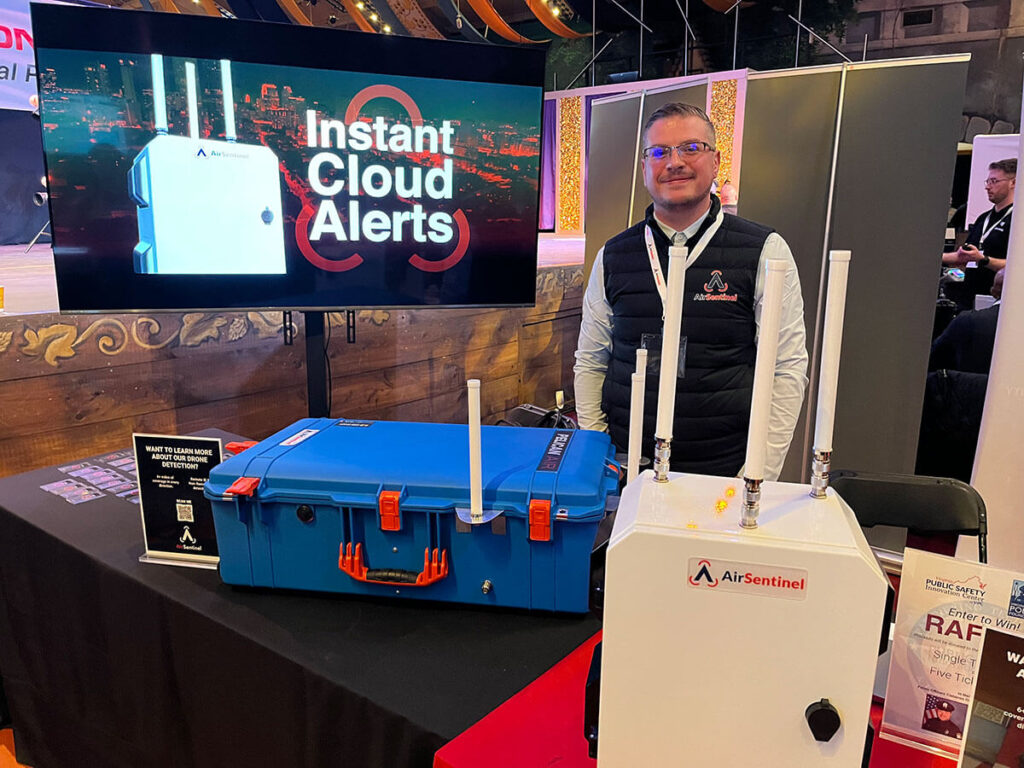
AirSentinel: Democratizing Drone Detection
Alan Erickson, CEO and CTO of Air Sentinel, discussed his company’s mission to make drone detection technology more accessible to the masses through both industrial-grade drone detection at affordable prices and a cost-free mobile app.
What’s New: The company publicly unveiled its Airspace Monitoring Station (AMS)™ units for the first time. Starting at $2,300 for the first year, these portable and fixed drone detection units can run continuously with cellular connectivity.
Erickson noted, “We’ve been field testing hardware with paying customers on an invite-only basis. And in that time, we’ve amassed several hundred users to our platform with zero marketing.”
Erickson also highlighted that his company has granted cost-free access to its suite of services through a mobile app, to empower those who operate drones in emergency response and mission-critical situations. He said, “We are thrilled to bring our innovative drone detection technology to the Android platform. Our primary objective has been to democratize airspace security. With the launch of the Airsentinel.ai app on Google Play, we are taking a giant leap in that direction.” This initiative aims to make drone security more accessible and efficient for public safety agencies.
Why It Matters: AirSentinel’s technology helps prevent illegal drone activities, such as smuggling, and supports law enforcement in identifying and tracking drones. Its democratization of drone detection through a free mobile app empowers both private and public sectors to manage their airspace effectively.
What’s Next: According to Erickson, the company plans to open an e-commerce platform and to enhance its technology with advanced features such as drone takeover capabilities for federal partners.
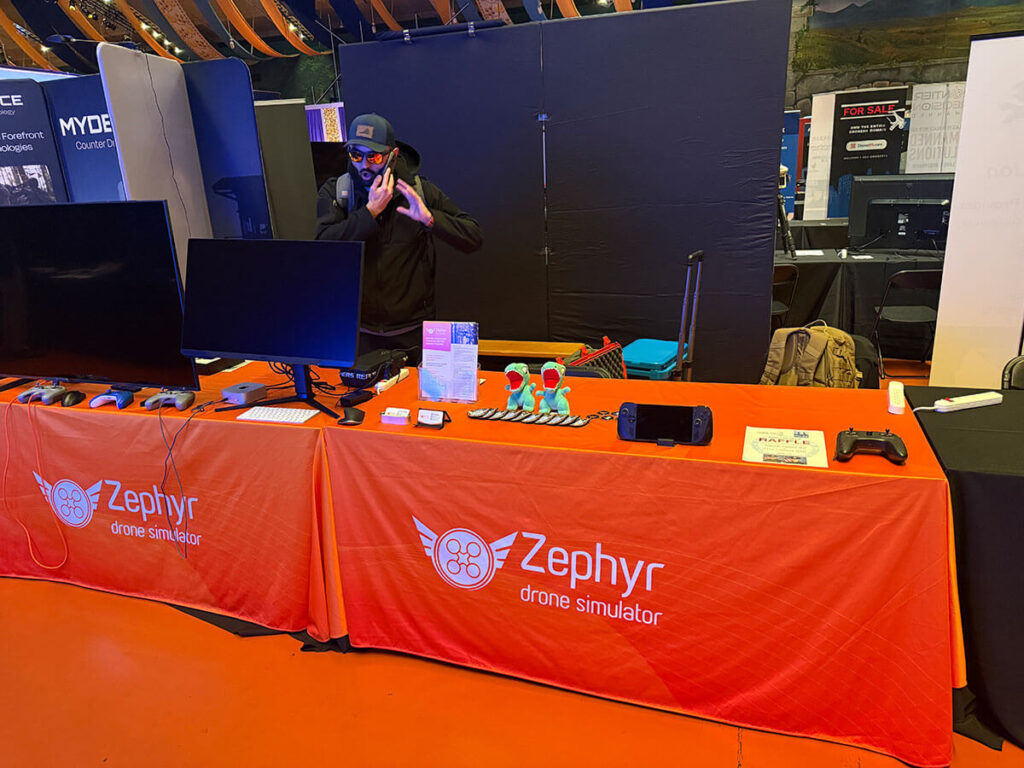
Zephyr: Professional Drone Training Simulations
Kyle Bishop, from Zephyr Drone Simulator, highlighted his company’s professional-level training tools for drone operators. Zephyr’s simulator integrates with learning management systems to track progress and enhance training efficiency.
What’s New: Zephyr is updating its simulator with new drone models and scenarios, including thermal imaging and new mission modules. Bishop explained, “We’ve been working on a lot of updates. We’ve added a few of the new U.S. models, like the Skydio X-10 and some of the other Blue UAS. Soon we’re adding thermal imaging, and some new scenarios that will really help in public safety, like search and rescue.”
Why It Matters: By offering realistic simulations, Zephyr helps reduce the risk of real-world training and ensures that operators are well-prepared for complex scenarios
Bishop noted, “A lot of the situations that we create in the SIM are difficult to recreate without risking a $40,000 drone or essentially injuring people. So we’re putting a lot of effort into making that as easy as possible and as safe as possible, while still recreating the stress that you get in the field.”
What’s Next: The company plans to release new scenarios and integrate its system with other industry platforms to streamline data management. Bishop mentioned, “We’ll be building out more scenarios. We’ve got some… of the web system updates so that we can do more partnering with companies and be able to integrate their user interfaces and also export data from our system to their platforms.”
Each of these companies stand at the forefront of innovation in public safety technology, in their own unique way. Their various achievements and advancements will undoubtedly play a crucial role in shaping the future of public safety.
By: Dawn Zoldi

